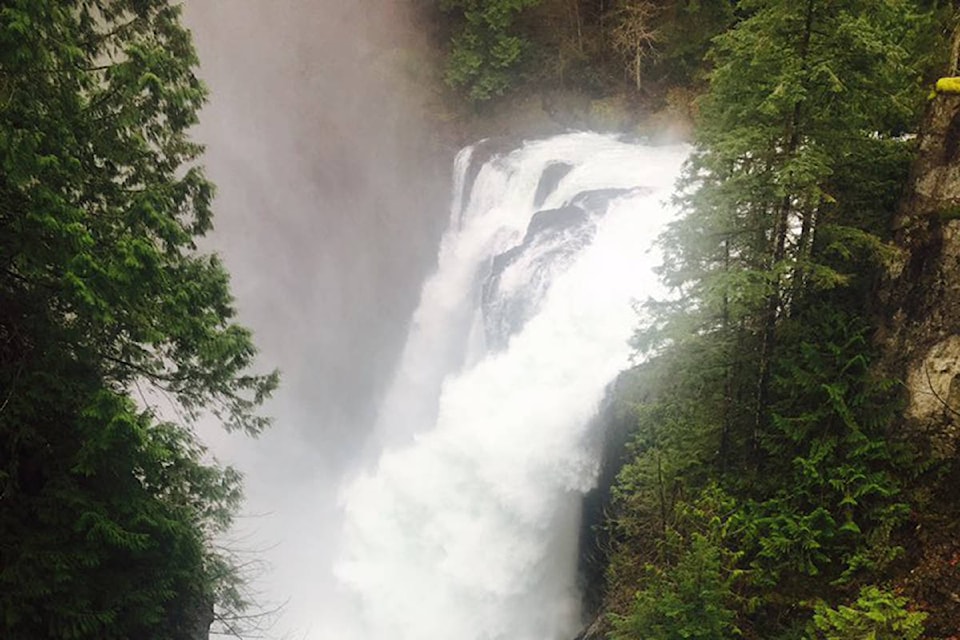The Campbell River system reservoir levels are rising due to wet winter weather, particularly since Dec. 31, BC Hydro spokesperson Stephen Watson says.
“After a dry fall, the winter season has been wet, particularly since Dec. 31,” said BC Hydro spokesperson Stephen Watson.
With the ongoing wet weather, and with the rising reservoir levels, last Wednesday evening BC Hydro began a system wide extra water release. We are issuing a public safety notice to please stay away from the Campbell River through February 4. Temporary safety signage is being placed along the river this afternoon.
📽: Elk Falls today at 25x the base water flow rate. Majestic.
— Stephen Watson-BC Hydro (@SWatson_BCH) January 23, 2020
A year since our last extra water release. The higher water flow may not last long. Check it out from the safety of the suspension bridge.#CampbellRiver@CRVisitorCentre pic.twitter.com/PsORxEZe5a
Back in December, the Upper Campbell Reservoir/Buttle Lake was on the lower side at around 215.5 metres. It had absorbed all the rain and snowmelt water inflows into the reservoir. The reservoir had come up almost four metres and is currently at 219.4 metres and rising. BC Hydro’s goal is to generally keep the reservoir level below 220.5 metres at this time of year for flood risk management abilities.
“Should the reservoir level reach 222 metres, which we currently do not forecast hitting, we would then lose all flood risk management abilities and all water inflows would be passed downstream,” Watson said.
📽: Elk Falls in #CampbellRiver. #BCStorms in Jan have the upstream reservoirs getting near full so we are releasing water d/s.
— Stephen Watson-BC Hydro (@SWatson_BCH) January 23, 2020
👀at the falls from the safety of the suspension bridge over the next few days. First time in a year we’ve released extra water. pic.twitter.com/Hi0zBdid3S
The Lower Campbell Reservoir/McIvor Lake was also low in December at about 175.25 metres. It has also increased and is currently at 177.25 metres and rising. BC Hydro’s goal is to generally keep the reservoir level below 178.3 metres.
The year-round base flow below the John Hart Dam and down the Elk Falls Canyon is four cubic metres per second (m3/s). The flow rate increased by 25 times to about 100 m3/s to begin flood risk management operations and is likely to hold at about that rate through this week. If the forecast worsens and BC Hydro needs to further increase downstream flows above 110 m3/s, it will issue another operational update. The total Campbell River flow will move from about 130 m3/s to about 225 m3/s.
The weather forecast is for a series of modest storms this week, though BC Hydro is following a potential atmospheric storm event that may arrive on Friday with warmer temperatures and heavy rain.
“We are also aware of the downstream and contributing Quinsam River flows, which is currently flowing at around 40 m3/s, as well as the high tide cycle, and may reduce flows from the John Hart facility during the high tide. BC Hydro has also reached out to the City of Campbell River for coordination,” Watson said.
This will be an opportunity for the public, from the safety of the suspension bridge and lookout, to see Elk Falls flowing at a higher rate.
BC Hydro will adjust water releases downstream as needed as the ongoing storm systems arrive, and closely monitor the actual water flows that come into the Campbell River system. Forecasts can change. We may provide another operational update in the near future.
RELATED: BC Hydro urges anglers to be cautious around the Campbell River until Feb. 15
